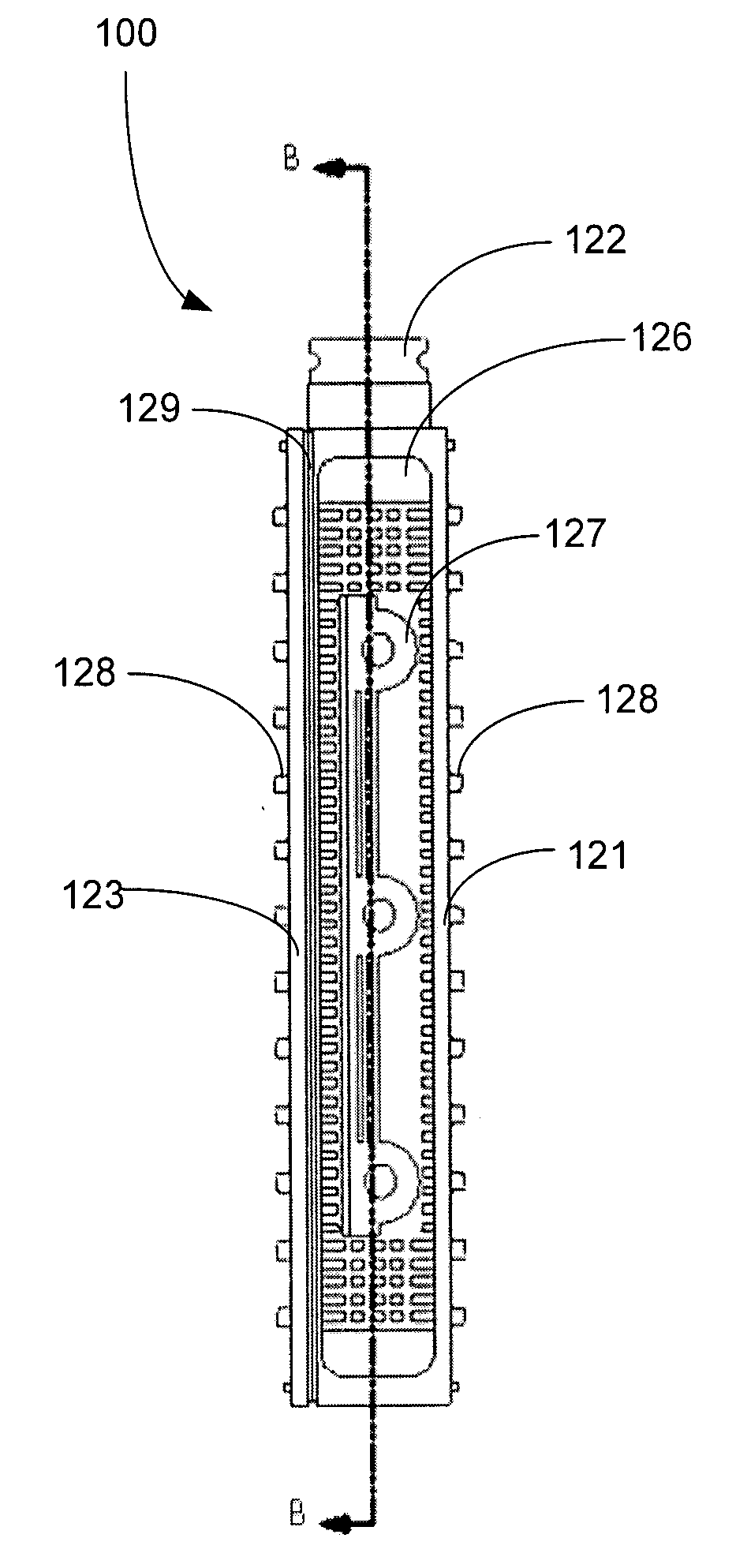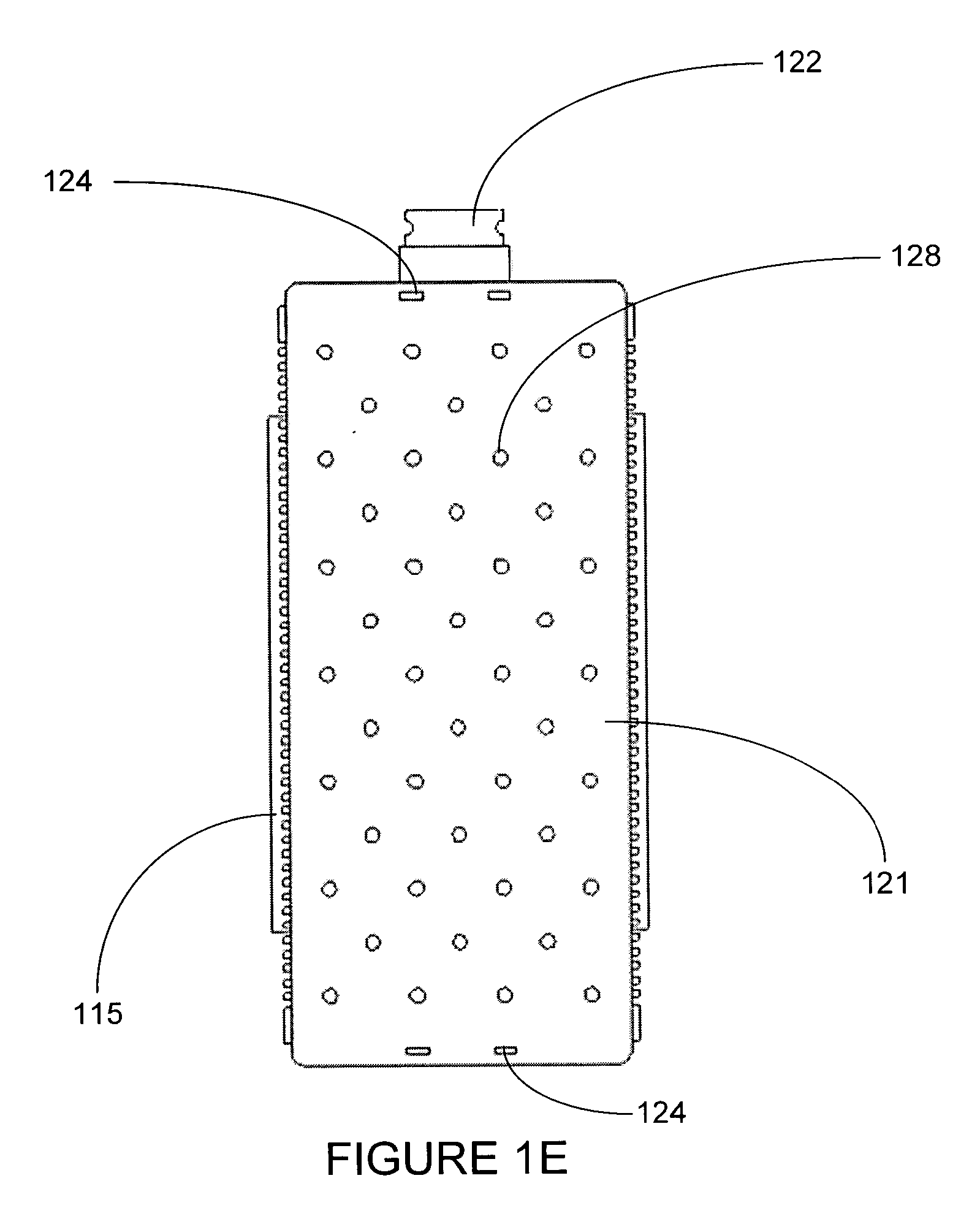Battery case having improved thermal conductivity
a battery case and thermal conductivity technology, applied in the field of battery case and alkaline storage battery, can solve the problems of poor tolerance to deep discharge, impractical power source for electric vehicles, hybrid electric vehicles, etc., and achieve the effect of more efficient cooling
- Summary
- Abstract
- Description
- Claims
- Application Information
AI Technical Summary
Benefits of technology
Problems solved by technology
Method used
Image
Examples
Embodiment Construction
[0039] The present invention discloses a battery and battery case having improved thermal conductivity. The battery case may be formed from a first polymeric material and a second polymeric material, wherein the second polymeric material has a higher thermal conductivity than the first polymeric material. The differing thermal conductivity promotes the transfer of heat away from the battery cell(s). Additionally, by strategic placement of the thermally conductive material, the overall weight of the system is not dramatically increased and heat transfer is maximized.
[0040] Referring to FIGS. 1A-1E, an embodiment of a battery, generally referred to as 100, of the present invention is illustrated. A first polymeric material comprises a battery enclosure on the top 121A and bottom 121B and a battery cover on the front 123A and back 123B. A second polymeric material comprises thermally conductive side walls 126A and 126B. In this embodiment, the thermally conductive side walls 126A and ...
PUM
 Login to View More
Login to View More Abstract
Description
Claims
Application Information
 Login to View More
Login to View More - R&D
- Intellectual Property
- Life Sciences
- Materials
- Tech Scout
- Unparalleled Data Quality
- Higher Quality Content
- 60% Fewer Hallucinations
Browse by: Latest US Patents, China's latest patents, Technical Efficacy Thesaurus, Application Domain, Technology Topic, Popular Technical Reports.
© 2025 PatSnap. All rights reserved.Legal|Privacy policy|Modern Slavery Act Transparency Statement|Sitemap|About US| Contact US: help@patsnap.com



